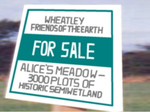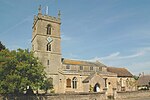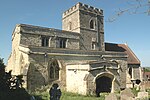Otmoor SSSI
Sites of Special Scientific Interest in Oxfordshire

Otmoor SSSI is a 213-hectare (530-acre) biological Site of Special Scientific Interest north of Oxford in Oxfordshire. It is adjacent to RSPB Otmoor, and they are both part of Otmoor, an area of wetland and wet grassland which was enclosed in the early nineteenth century. This site in the floodplain of the River Ray has herb-rich damp grassland, wet sedge, coarse grassland, woodland, pools and ditches. More than sixty species of bird breed on the site, such as curlew and lapwing, while wintering birds include teal, wigeon, snipe, golden plover and short-eared owl.Much of the site is an MOD firing range and is closed to the public.
Excerpt from the Wikipedia article Otmoor SSSI (License: CC BY-SA 3.0, Authors, Images).Otmoor SSSI
Otmoor Lane, South Oxfordshire Beckley and Stowood
Geographical coordinates (GPS) Address Nearby Places Show on map
Geographical coordinates (GPS)
| Latitude | Longitude |
|---|---|
| N 51.82 ° | E -1.169 ° |
Address
Otmoor Range Danger Area
Otmoor Lane
OX3 9TD South Oxfordshire, Beckley and Stowood
England, United Kingdom
Open on Google Maps










